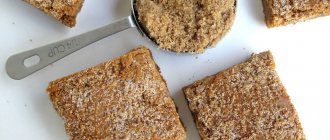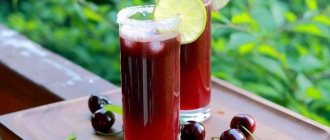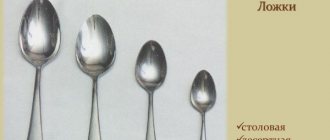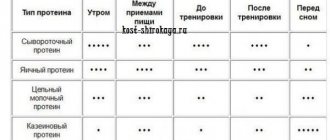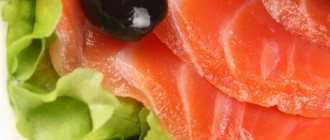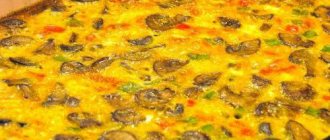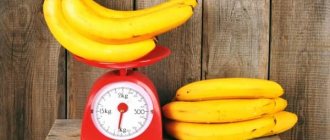Sugar and other sweeteners were inaccessible to ordinary people in the Middle Ages, since their extraction took place in a rather complex way. Only when sugar began to be produced from beets did the product become available to the middle and even poor segments of the population. At the moment, statistics believe that a person eats about 60 kg of sugar per year.
These values are shocking, considering that the calorie content of sugar per 100 grams is about 400 kcal. You can reduce calorie content by consuming certain sweeteners; it is better to choose natural formulations rather than drugs purchased at the pharmacy. Next, the calorie content of sugar and its various varieties will be presented in detail, so that everyone can make their choice in favor of a less calorie product.
Calorie content of sugar
The total calorie content and BJU of sugar can be presented in the table:
| Calorie content, kcal | Proteins, g | Fats, g | Carbohydrates, g |
| 398 | 0,0 | 0,0 | 99,7 |
From the above it follows that it is recommended to reduce consumption of the product - this is also justified by the composition.
Appearing as:
- about 99% of the total amount in the composition is given to mono- and disaccharides, which give the calorie content to sugar and sweetener,
- the remainder is given to calcium, iron, water and sodium,
- Maple sugar has a slightly different composition, which is why its calorie content does not exceed 354 kcal.
It is better to purchase maple sugar only from producers from Canada, since this country can ensure the quality of the product.
Calorie content
Brown cane sugar has approximately the same calorie content as its counterpart, white beet sugar. If you do not observe a modest measure of its consumption, this product can also quickly go into body fat.
So, if the calorie content is 100 g. white refined sugar is 387 kcal, then unrefined brown sweetness is 377 kcal. As you can see, the difference is insignificant. However, if you wish, you can find brown cane sugar on sale, which has 200 times less calories. A similar effect is achieved by adding aspartame, which is an artificial sweetener, to the product.
Beneficial features
Cane sugar exhibits beneficial properties for humans due to the following:
- B vitamins;
- minerals: sodium, calcium, phosphorus, zinc, iron, sodium.
Subject to dosed consumption, the product has a calming effect on the nervous system, improves mood and memory, and has a mild sedative effect.
As a source of carbohydrates, it provides energy and improves performance. The minerals in sugar help strengthen the skeletal system, normalize blood pressure and heart function.
Moreover, sugar improves immunity, reduces the risk of infections, and reduces cough and sore throat.
A little bit of history
In ancient times, brown sugar crystals, extracted from cane, became the first sugar that people began to enrich their diet with. The first mentions of this wonderful plant date back to the times of Alexander the Great. India is considered to be the birthplace of cane sugar, from which this product spread throughout Europe. In the 16th century, brown cane sugar was a symbol of luxury and wealth. This product, which became the cause of wars of conquest, was an integral guest of the royal table. In modern times, brown sugar is not something unusual or outlandish, because everyone can afford to buy it.
About calories in a spoon of sugar
To accurately determine the number of calories in a cooked dish, you must provide the following data and values:
- a tablespoon holds 20 g of product,
- provided that there is a heaping tablespoon of product, there will be 25 g,
- 1 g of granulated sugar contains 3.99 kcal, so one level tablespoon contains 80 kcal,
- if the spoon of the product is topped, then the calories increase to 100 kcal.
When preparing dishes with the addition of granulated sugar, if you want to lose weight, the energy value of the product should be taken into account.
How many calories are in a glass of tea (sugar 3 tablespoons) and with what?
Herbal tea with a long history.
Tea with sugar - calories, composition, description. (read more…)
Ingredients of the set: black tea Taiga collection (black tips) black tea with thyme (premium) green tea with ginger green tea Eight Treasures of Shaolin tea Sweet Kiss Turkish apple tea rooibos natural honeybos
Pressed black tea with the addition of chamomile flowers. This tea is a great way to perk up in the morning and have a productive day.
Set of 4 teas: black tea with thyme green tea with ginger Sweet Kiss Honeyboss tea
Natural mini churchkhela made from cherry juice, with walnuts. No thread inside. No added sugar. Weight 45 g
Set of 4 teas black tea Taiga collection black tips green tea Eight Treasures of Shaolin Turkish apple tea natural large rooibos.
Natural mini churchkhela made from pomegranate juice, with walnuts. No thread inside. No added sugar. Weight 45 g
Which sugar is sweeter and better, cane or beet sugar?
Gur tastes less sweet, primarily due to the fact that its crystals are larger. The smaller they are, the sweeter the product. The powder will be the most sugary, since when it is used, a very large area of contact of the product with taste buds is obtained.
Traces of molasses in the unrefined carbohydrate give it a slight bitterness, thereby reducing the sweetness. There is a big “minus” to this: you can eat more of the aromatic, non-sweetening product. Some eat pieces of it like caramel, without counting the portion.
White refined sugar has smaller crystals, which means beet sugar is sweeter.
White and brown sugar: what are the differences?
Brown sugar has a number of undeniable advantages compared to its white counterpart. White sugar is a refined product obtained by chemically processing brown sugar. To obtain it, various bleaching agents are used, some of which, “settling” in white sugar, penetrate into the human body with it. Brown sugar, the recipe for which does not require this kind of purification, is more natural and environmentally friendly.
The brown color of sugar is due to the presence in its composition of components such as molasses or molasses, which contain a lot of useful minerals. Therefore, brown cane sugar is significantly ahead of white sugar in terms of biological value.
About calories per teaspoon
Considering teaspoons, we can highlight the following caloric content indicators:
- a teaspoon contains from 5 to 7 g of bulk component,
- if you calculate calories per 1 g, then a teaspoon contains from 20 to 35 kcal,
- sweeteners reduce the indicators by ¼ part, which is why you can reduce your daily intake and improve your health.
It is important not only to know how many calories are in 1 teaspoon of sugar, but also to determine the KBJU of the product. Sweeteners contain fewer calories, but cannot boast of a more beneficial composition.
Since numerous chemical components are added to them to reduce calorie content. It follows that consuming natural sugar is better than replacing it with a sweetener.
Types of sugar and their distinctive features
Sugar is the general name for sugary substances. These are carbohydrates. For example, sugars include fruits and vegetables rich in fiber. Starch and lactose are also types of sugar. However, sugar as a product used for adding to drinks and cooking is produced from certain plant varieties.
Distinctive features of types of sugar:
- Color. It ranges from dark brown, black, to the usual white.
- Texture. Syrup – liquid sugar, refined sugar, granulated sugar.
- Taste. Maple syrup has a more pronounced caramel flavor, while cane syrup has a sweeter flavor.
- Chemical properties. For example, beet sugar adds a crunchier texture to prepared dishes, while cane sugar can thicken the texture.
- The nutritional value . The main parameter for health. For example, some types of sugar do not contain any nutrients, while others contain small amounts of vitamins.
The calorie content of a teaspoon of sugar of different types ranges from 380–400 kcal. Depending on which plant juice the sugary substances were taken from, they are divided into, for example, cane, maple, beet, sorghum, palm and other types of sugar described below.
Composition and nutritional value
The product is considered ordinary sucrose, which includes the following elements: calcium, iron, potassium, sodium in small quantities, only 1%. The product contains no proteins or fats, but per 100 grams it contains 99% carbohydrates. When it enters the acidic environment of the stomach, it breaks down into glucose and fructose. It is for this reason that the sweet ingredient is called “empty carbohydrate”, because the body does not spend any energy on breakdown. Now let's look at the calorie content of sugar of all types.
Today, on store shelves you can find many varieties of crystalline sand: reed, beet, palm or maple. In appearance and method of cleaning, it can be white or with a yellowish tint, crumbly and lumpy.
Refined sugar
This type of product undergoes additional purification, bringing it closer to the composition of pure sucrose. The pieces are made by processing cane or beetroot. The calorie content of the product per hundred grams is 400 Kcal. There are 20 calories in a cube of sugar, since the weight of 1 cube does not exceed 5 grams. Refined cane differs from beetroot in color and rich taste. The first version of the product is considered more useful , as it is additionally enriched with vitamins and nutrients. This is why brown sugar costs much more than white sugar.
Friable crystal sand
A common and familiar version of sugar for everyone. White or yellowish grains, packaged in 1, 5, 10 kg or more. The sucrose content is 99.8%. 100 grams of the product contains 399 Kcal, 1 teaspoon - 34 Kcal, a 200 gram glass - 800 Kcal, and a tablespoon - 98 Kcal.
Vanilla sugar is considered a type of simple sand. Its difference is the presence of an aromatic substance. Sprinkles are used to decorate confectionery products or improve the taste of the finished product. It contains 2 components - sugar and crushed vanilla. 100 grams of aromatic powder contains 396 Kcal.
Brown sugar differs from white sugar in the way it is processed; it can be said that it is not processed. Beet sugar without processing is not sold, as its taste does not attract buyers. The calorie content of the natural ingredient is 400 Kcal per 100 grams.
Natural sweeteners
The nutritional energy value of natural substitutes is the same as that of simple crystalline sand. There is another type of substitute - synthetic, obtained in laboratory conditions. The latter are considered completely non-caloric, we’ll talk about this a little later.
So, natural substitutes include (calorie content per 100 g):
- sucrose - 397 Kcal;
- xylitol - 400 Kcal;
- fructose - 375 Kcal;
- maple sugar extracted from the buds of the plant - 350 Kcal;
- honey - 410 Kcal;
- sorbitol - 390 Kcal.
There are no artificial analogues of sugar on this list, since their calorie content is very low. Let's look at an example: 1 gram of aspartame contains 4 kcal . The synthetic product is 350 times sweeter than regular sugar. 100 grams of sand can be replaced by 0.5 g of a chemical substance, the calorie content of which will not exceed 2 Kcal.
From all of the above, it becomes clear that you should avoid using white crystalline sand, especially synthetic analogues. Otherwise, the destruction of the body will occur faster than nature intended.
Benefit or harm?
Brown cane sugar contains 85 times more calcium, 173 times more potassium, and 191 times more iron than beet sugar. At the same time, it contains magnesium, which is not present in white refined sugar at all, and B vitamins.
The nutritional value of white and brown sugar is 377 calories.
The processed refined product contains 99.91 grams of sucrose, and baster - 96.21 grams per 100 grams.
Thus, they contain relatively the same amount of carbohydrates. From the point of view of provoking atherosclerosis and disorders of fat metabolism, they have the same effect on the human body [6]. Table No. 1 “Comparative characteristics of beet and cane sugar”
| Chemical composition | Nutrient content per 100 grams, milligrams | |
| Beet sugar | Cane sugar (bastre) | |
| Vitamins | ||
| Thiamine (B1) | – | 0,008 |
| Riboflavin (B2) | 0,019 | 0,007 |
| Niacin (RR) | – | 0,082 |
| Pyridoxine (B6) | – | 0,026 |
| Folic acid (B9) | – | 0,001 |
| Macronutrients | ||
| Potassium | 2,0 | 346,0 |
| Calcium | 1,0 | 85,0 |
| Phosphorus | – | 22,0 |
| Sodium | – | 0,18 |
| Magnesium | – | 29,0 |
| Microelements | ||
| Zinc | – | 0,18 |
| Iron | 0,01 | 1,91 |
In terms of vitamin and mineral composition, cane sugar is many times superior to beet sugar.
Glucose in bastra is of higher quality than in white refined sugar. It nourishes the human brain and protects against mental overload. Therefore, during times of severe emotional shock, it is recommended to eat sweets to help the body cope with the shock. At the moment, a cup of strong coffee with two spoons of bastra or cane candy with dried fruit will help. In addition, glucose “endows” the body with an energy reserve that will not leave a mark on your figure, since unrefined sugar contains plant fibers that facilitate the absolute absorption of carbohydrates.
Useful properties of brown bastra:
- increases performance (like sea salt);
- improves well-being;
- supplies the body with minerals and vitamins;
- stabilizes the functioning of the circulatory and nervous systems;
- strengthens bone and joint tissues;
- normalizes stomach function;
- restores energy losses of the body after intense training;
- regulates liver function;
- prevents atherosclerosis.
A natural raw sweetener is used in cosmetology as the main component of body scrubs to clean, tighten and nourish the skin.
Unlike beet sugar, cane sugar is much less likely to cause caries, has less effect on metabolic processes, and does not contain sulfur dioxide, formic, or phosphoric acids, which remain in the product after bleaching and poison the body.
To prevent bastra from harming your health, observe moderation. For the human body, the safe intake of saccharides per day is 50–60 grams of natural, unprocessed sweetener. If excessive, it leads to fat deposition, weight gain and threatens obesity. In addition, patients with diabetes and hypertension should limit their consumption of bastra so as not to aggravate their health problems. And people with an allergic reaction to the product should completely exclude the sweetener from their diet.
Abuse of sugar is addictive, increases the risk of developing cancer, and overloads the pancreas.
Nutritionists recommend replacing bastre with:
- natural honey;
- sugar cane juice (organic);
- dried fruits (dates, prunes, raisins, dried apricots, figs);
- berries and fruits with a high glucose content (grapes, persimmons, bananas, apricots, mangoes, tangerines, lychees, cherries) [7].
About brown sugar calories
Reducing kilocalories leads sweet tooth lovers to the need to look for healthier products. This is where cane sugar, or the brown variety of the natural product, became popular.
It is in his favor that people who want to lose weight but maintain their health try to refuse, which turns out to be erroneous and useless. Calorie content in this case is 378 calories per 100 g. From here it is easy to calculate how many calories are in a tablespoon and a teaspoon.
Tip: To maintain your figure, it is recommended to drink tea without sugar. If this is not possible, a sweetener is required, it is better to give preference to a natural sweetener. These include honey, which has much less calories per teaspoon.
Sweeteners
Sugar, due to its unusually high calorie content, leads to an increase in the concentration of glucose in the blood. Often the pancreas does not have time to synthesize insulin in response to excess amounts of sucrose.
In such cases, consuming sugar is strictly prohibited so that there is no accumulation of calories in the body. A strict ban is imposed on everyone's favorite sweets and cookies, and people have to buy sweeteners from the shelves for diabetics.
The essence of substitutes is that they do not contain a single spoon of sugar, the calories of which are dangerous for the body. At the same time, the body can react quite painfully to the lack of a favorite product, but it is still possible to overcome addiction to sugar, although it is quite difficult.
This is due to the presence of taste buds that do not perceive substitutes as a complete alternative to regular sugar, however, if it is a natural sweetener, then it makes sense.
You need to wean yourself off sugar consumption gradually. For those who want to lose weight and lose extra centimeters, it is recommended to start by giving up sugar in tea, since its calorie content is much higher than the permissible norm. It may be painful and difficult at first, but gradually your taste buds will no longer sense the sugar deficiency.
Real cane sugar and how to distinguish a fake from the original
All manufacturers position their product as real, but this is just advertising. It sometimes reaches the point of absurdity and the inscription “such sugar will never cause excess weight” appears on the labels.
Unfortunately, no one has carried out detailed laboratory studies that would help identify counterfeits in the vastness of the former USSR. After visual assessment and tasting, commodity experts come to disappointing conclusions: the majority of unrefined sweet products on supermarket shelves are refined sugar processed with molasses.
Natural organic cane sugar can be purchased on the IHerb website with an additional 5% discount.
How to check cane sugar for authenticity at home
This question interests everyone, but there is no simple and reliable home method for determining the authenticity of cane sugar. The origin of the sweet can be unambiguously confirmed only in the laboratory through a very complex and expensive carbon isotope analysis. Such popular folk methods as dissolving it in water or dropping iodine will not give any result.
When counterfeiting cane sugar, regular beet sugar will be tinted with the same molasses or food coloring, color E150, approved for use. Therefore, the counterfeit product will also give a brown tint when dissolved in water.
As for iodine, you need much more starch in the product for it to turn blue. And in a colored solution, tiny changes in color cannot be noticed by the eye.
Only those who have tried the real product and regularly use it will be able to distinguish a fake by taste; it should have a bright aroma and taste. Externally, the crystals of unrefined carbohydrate are never as uniform in size and perfectly smooth as those of colored refined sugar.
Cane sugar tastes better than regular sugar and can transform your morning cup of coffee or fruit dessert. But it should be remembered that in large quantities it is also dangerous to health.
Use in cooking
Brown cane sugar is used as a sweetener for fruit and berry juices, coffee, cocoa, tea, carbonated drinks, chocolate, and liqueurs. With the addition of bastra, the taste of liquids becomes more intense, intensified and transformed, and the aroma acquires characteristic notes of caramel, which gourmets greatly appreciate. As a sweet additive, it is used in the production of dairy products, cooling cocktails, compotes, candied flowers and fruits.
This is an indispensable product in the confectionery industry: baster is used in baking baked goods, preparing creams, mousses, jellies, ice cream, jam, sweets, cookies, glazes, cakes, marmalade. No dessert is complete without the use of sugar. It improves the consistency of the product, increases its volume, promotes the growth of yeast dough, and extends the shelf life of the product.
Bastre is a unique spice that is added not only to confectionery, but also to sauces, soups, cold dishes, salads, carbonara, stews, and canned meat. In Swedish cuisine, cooks add brown sugar to liver pate and use it to marinate herring. In addition, the natural sweetener is used in brewing and winemaking.
Recipe for making cinnamon rolls with bastro
Ingredients:
kefir 3.2% - 250 milliliters;- dry yeast – 10 grams;
- vegetable oil – 100 milliliters;
- sea salt – 2.5 grams;
- wheat flour – 750 grams;
- ground cinnamon – 15 grams;
- cane sugar – 100 grams;
- chicken egg - 1 piece;
- honey – 30 milliliters;
- butter – 70 grams.
Cooking principle:
- Dissolve the yeast in 50 milliliters of water, add 15 grams of sugar (1 tablespoon) to speed up the reaction. The mixture should rise into a foamy head.
- Mix vegetable oil with kefir, heat on the stove to 40 degrees and pour into the yeast. Add the remaining sugar, salt, chicken egg.
- Sift the flour. Add to the butter mixture.
- Knead the dough, leave it to rise for an hour.
- Melt the butter and mix the cinnamon and sugar.
- Roll out the dough into a layer, brush with oil. Sprinkle generously with a mixture of cinnamon and sugar on top and roll into a roll.
- Cut the filled dough into squares and form buns from each.
- Preheat the oven to 180 degrees. Grease a baking sheet with vegetable oil, place the buns on it, and leave on the stove for 15 - 20 minutes. Once the dough has risen, brush the top with beaten egg. Bake for 30 minutes.
- Remove the finished buns from the oven, remove from the baking sheet and cool. Grease the surface with honey or sprinkle with powdered sugar.
Serve cinnamon rolls with tea or coffee.
How to check cane sugar for quality?
There are several ways to check the quality of cane sugar:
- It has the property of hardening in air. A quality product, unlike a fake, quickly becomes hard when exposed to air.
- By changing the color of liquid and crystals. For this method, place a spoonful of sugar in a glass of water. Both types of sugar (cane sugar and caramelized beet sugar) have the ability to color liquid. However, the crystals of the reed product will not change their color, and the fake ones will quickly acquire their original white tint.
- With the help of fire. If you dissolve a few tablespoons of natural sugar in a small volume of water and put it on fire, in a couple of minutes the liquid will thicken and caramel will form. If you add fake sugar, the liquid will become cloudy and turn into a paste.
Beetroot
It is extracted from a special variety of beet called “sugar beet”. Unlike regular beets, this one has a pronounced sweet taste. The sugar beet root is more elongated and white in color.
What happens
Beet sugar is divided according to its structure. There is no separation between beet varieties, since only one is used.
Based on consistency, the following types are distinguished:
- Granulated sugar.
- Refined granulated sugar.
- Powdered sugar.
- Refined sugar.
- Lump refined sugar.
- Refined powdered sugar.
What are they made from?
Sugar beet is a herbaceous plant grown mainly in fields in the southern regions of Russia, Belarus and Ukraine.
Used as an analogue to sugar cane and other plants containing simple sugars. The sucrose content in beets can reach 20%.
Characteristics
Beet sugar has identical nutritional value to cane sugar. However, it has other uses in cooking. Chefs often add beet sugar to dishes that need a stronger, denser structure. For example, in future crackers or caramel.
About the calories of sweeteners
Sweeteners have a slight advantage over natural sugars. But they are recommended to be used provided that the concentration of tablets or powder is much higher, which means you can consume fewer kilocalories.
| Sweetener | Energy value |
| fructose | 375 kcal |
| sorbitol | 354 |
| xylitol | 367 |
Sucrose can improve mood, so it is recommended to consume it in the morning. You can add a teaspoon of sugar or a sweetener to your coffee, which will help you cheer up in the morning, start metabolic processes and normalize the functioning of your internal organs.
It is recommended to choose natural varieties, which include xylitol, sorbitol, and fructose. There are also synthetic ones, among which saccharin, aspartame, sodium cyclamate, and sucralose are common. Synthetic sweeteners have zero nutritional value, but this is not a reason to consume them in unlimited quantities and in glasses. Synthetic sweeteners cause overeating, which is determined by their composition - they contain many harmful substances that can cause the development of cancer and an allergic reaction, including anaphylactic shock.
Maple
This is a traditional Canadian sweetener. Most often used in the form of syrup. On supermarket shelves in Russia you can see “maple syrup,” which is maple sugar.
The calorie content of a teaspoon of sugar (maple) will be less than the same amount of white refined cane sugar. The difference is small - just a few calories. However, maple sugar has a rich chemical composition that makes it much healthier than regular sugar.
What happens
Maple sugar is classified by color. For this purpose, in Canada and the USA there are certain indices, classes: A, B, C (America) and No (Canada).
What type of syrup will belong to depends on the thickness and light transmittance of the product:
- Extra light . It has a very delicate maple taste.
- Light . Sweet taste, soft. Color amber, medium.
- Average . Sweet taste, pronounced, maple. Used for toppings.
- Dark. Pronounced, sharp taste. Not so sweet. Used in confectionery and baking.
- Extra dark. Sharp, caramel taste. Used only in the food industry.
What are they made from?
Mainly 3 types of maple are used:
- Sugar.
- Black.
- Red.
Other species of this plant are also taken as the basis for the future product, but their juice contains much less sucrose than these varieties. Sugar is made from tree sap.
Characteristics
Maple sugar is most often consumed in the form of syrup. It has a delicate taste and soft consistency, therefore it is used as toppings and additives to desserts: ice cream, pancakes, cream.
Types of cane sugar
During the production process, molasses of varying concentrations are obtained. This syrupy liquid envelops each crystal and creates several types of unrefined cane sugar.
Demerara
The name encrypts the name of a river and valley in South America - the place where reed originally grew. This type of sugar has large, fragrant crystals. © https://ydoo.info/product/sahar-trostnikovyy.htmlThey are hard, golden-brown in color and sticky. Demerara is commonly used as a sweet additive in coffee or tea. It's also great for topping pies, muffins and cookies.
Muscovado
Muscavado is a medium-sized crystal with an unusual hue, similar to the color of honey. To obtain this type of sugar, the juice is crystallized after its first boiling.
Muscavado can be purchased in two versions:
- dark - it is dark brown in color with a persistent smell of molasses;
- light – combines creamy aftertaste notes, lighter color and the smell of molasses.
The rich smell of molasses adds a special flavor to sweet baked goods, which is why muscavado is often included in recipes for muffins, cakes and pastries. It gives an unusual shade to sauces and marinades, toffees and airy creams.
Turbinado
Turbinado is partially refined sugar. After removing the molasses with water or steam, it has dry crystals of various shades (from golden to brown). This type of sugar is suitable for absolutely any dish or drink.
Black Barbados, or soft molasses
This sugar contains molasses in large quantities. Its small crystals are coated with aromatic molasses, which gives it a dark hue and a distinct, unforgettable taste. Barbadian sugar is considered a gourmet dessert ingredient. Adding even a spoonful of sweetness to chocolate, muffins or yogurt gives ordinary recipes new flavors and elegance.
Refined cane sugar
This type of sugar goes through all stages of purification and is also divided into several subtypes:
- granulated sugar for coffee – has large crystals and golden color, which best combine with the taste of natural coffee;
- golden round sugar - it has medium-sized crystals with a light fruity flavor;
- golden granulated sugar - similar to regular beet sugar, but less sweet in taste;
- golden powdered sugar – has the color of honey and a light, delicate taste.
Bastre - what is it?
Cane sugar is brown crystals with a caramel aroma. The cost of bastra is 4–6 times higher than that of white beet sugar. The high price of the product is due to the fact that it is an unprocessed, primary environmentally friendly product, which is less harmful (and even beneficial in moderate quantities) than refined.
According to the recommendations of the World Health Organization, the daily intake of sugars should not exceed 50 grams for women and 60 grams for men (10% of the daily calorie intake) [2][3]. In addition, do not forget that berries and fruits contain fructose, which belongs to the category of saccharides.
Bastre is a spice that increases the shelf life and taste of a dish, therefore it is used in the preparation of sweet and sour sauces, marinades, canned meat and fish products. As a result, it would seem that it would not be difficult to fit into the established safe standards, but in fact it turns out to be the opposite.
Abuse of sugars increases the load on the heart and the chances of developing atherosclerosis, heart attack, stroke, type 2 diabetes and yeast infections. In addition, it causes acne, weight problems, psycho-emotional imbalance (depression), and destroys nerve endings. According to recent research in the field of oncology, scientists have found that sugar increases the chances of cancer because it serves as a “feeder” for modified cells.
Due to the rich mineral composition of bastra (phosphorus, zinc, sodium, potassium, magnesium, iron), it is recommended to completely stop taking processed white beet sugar and switch to unrefined brown cane product [1][3].
Benefits and harms, daily intake
To lead a healthy lifestyle, you must follow the daily norm of granulated sugar. Men are allowed to eat no more than 9 teaspoons of the product per day, women - only 6, since they have a slow metabolism and are more prone to obesity. This does not mean that the product is consumed in its pure form, added to tea and other drinks and dishes. In this case, the component is also taken into account when included in other products - these are not only sweets, but also juices, fruits, vegetables, and flour products.
The benefit of granulated sugar is to activate the functioning of internal organs, as well as the release of the hormone of joy and happiness. Despite the beneficial properties presented, granulated sugar is an empty carbohydrate that does not satiate, but increases the total daily calorie intake.
Important: Excessive consumption leads to the development of caries, accumulation of fat cells, and removal of minerals and calcium from the body.
The questions of how many kcal are in granulated sugar, how beneficial and harmful the product is to the human body are discussed in detail. You should not pay attention to caloric content. It is enough to give up sweets and starchy foods - to exclude empty and easily digestible carbohydrates, which, if consumed excessively, are converted into fats and do not saturate the body for a long time.
Peculiarities
Benefits and harms
The rich chemical composition of coconut determines a wide range of its beneficial effects on the human body:
- the high content of fatty acids helps the body feel full more quickly;
- healthy saturated fats help stabilize blood cholesterol levels;
- a large amount of fiber helps improve intestinal function, remove toxins and waste;
- the high percentage of water in the composition makes coconut a natural diuretic, which is important for those with a tendency to edema and urological pathologies;
- a significant proportion of vitamins and minerals determines the positive effect of coconut on human immunity;
- high potassium content has a beneficial effect on the heart;
- proteins and iron in coconut pulp are necessary for athletes and people leading an active lifestyle: the body becomes resilient, the muscles become strong and elastic, and the energy level will go through the roof.
Coconut does virtually no harm, but:
- the presence of large amounts of fiber can cause an attack of diarrhea in those who are prone to this phenomenon;
- high calorie content can cause excess weight gain if you abuse coconut.
Advice
The recommended daily dose of pulp, which will not cause the development of any negative reactions in the body, is 300 g for men, 200 g for women and 100 g for children aged 3-5 years.
The benefits of sugar
It is important to understand that granulated sugar is a pure carbohydrate that quickly saturates the human body with energy, but contains scanty amounts of vitamins and minerals.
When entering the body, sugar is broken down by gastric juice into fructose and glucose. It is in this form that it enters the blood. After this, insulin produced by the pancreas regulates the concentration of sugar in the blood and delivers sugar breakdown products into cells.
Interesting: Calorie content of funchose per 100 grams
Perhaps the only advantage of sugar is the production of glucose during its breakdown, which is the main source of nutrients entering the brain. The sugar glucose is also used by the liver to form phenol-eliminating acids.
Palm
Palm sugar is used in Indonesian and Malay cuisines. It is considered an analogue of cane sugar. Used to prepare both sweet and savory dishes. Similar to palm oil, it does not contain any harmful substances or carcinogens.
What happens
Varieties of palm sugar depending on the tree whose sap is used to produce syrup:
- Coconut.
- Date.
- Nipovy.
What are they made from?
Palm sugar is produced from palm sap. Coconut and date palms can be used. First, the tree sap is boiled down to a syrup.
It can be used as an analogue of maple syrup.
Characteristics
Palm sugar is darker and sweeter than that obtained from date or neap trees. Unlike other syrups, palm syrup tends to crystallize, which indicates a high sucrose content.
Sugar or glucose?
First, let's try to define the terms. The sugar that we are all used to talking about is actually called sucrose. And the term “sugars” (in the plural) characterizes carbohydrates - a class of compounds that includes not only sucrose, but also various saccharides (galactose, mannose, fructose, maltose, glucose, etc.). I think this is all clear. Now all that remains is to answer George’s question. Glucose is the main monosaccharide in the blood, which is why it is so often referred to as “blood sugar.”
Another name for glucose is “grape sugar.” Why grape? But because a very large amount of glucose is contained in grape juice. That is why endocrinologists categorically prohibit diabetic patients from consuming this fruit. By the way, some argue that grapes are not a fruit at all, but a berry. What do you think?
Features of sugar consumption
If you completely stop eating sweets, blood circulation will be disrupted, and at the same time the normal functioning of most body systems. This means that sugar must be in the diet. It is only important to choose the right type of cane sweetener and follow the dosage.
Daily consumption rate
An adequate dosage per day is approximately 45 grams. In this case, no diet will be disrupted. You can consume up to six tablespoons of this substance per day, so you don’t have to give up sweets.
Is it possible to have cane sugar for diabetes?
In mild stages of diabetes, it is allowed to consume a small amount of sweets, which are prescribed by a doctor. In general, this amounts to about 5% of your daily carbohydrate intake. It is necessary to be careful about the volume consumed and take into account the composition when dosing drugs that lower blood sugar levels. At the same time, you can include only high-quality varieties in your diet and be able to distinguish them from harmful counterfeits.
For type 1 and type 2 diabetes, it is better to avoid consuming this product, since the glycemic index of cane sugar is quite high and amounts to 55 units. This increases glucose levels and the proportion of carbohydrates in the body. In such cases, it is better to give preference to sweeteners.
We recommend reading: What are the benefits of chanterelles and how to cook them deliciously
Cane sugar for pancreatitis
If inflammatory processes occur in the digestive organs, you should be careful about consuming any sweets and monitor the dosage in moderation. For pancreatitis, doctors recommend adding just one teaspoon of cane sugar to drinks, but it is better to avoid the treat altogether during the illness.
Cane sugar during pregnancy and breastfeeding
During pregnancy, it is recommended to replace regular sugar with cane sugar, as it contains elements necessary for mother and child and is well absorbed. In addition, it can improve lactation and the taste of milk, help cope with insomnia and promote rapid recovery after childbirth and the production of the happiness hormone. However, the calorie content here is no lower than usual, which means you should reduce your consumption to three spoons a day, because pregnant and lactating women are prone to obesity.
Is brown sugar healthy?
It is necessary to understand that it is not just the color and shape of a certain type of sugar that plays a role, but whether the original product has been chemically processed. The modern food industry can easily give a dark color and a pleasant aroma to highly processed sugar from cheap sugar beets or sugar cane residues - it's just a matter of marketing.
On the other hand, natural coconut sugar, which has a lower glycemic index, can be bleached through gentle processes - as a result, it will look like regular refined sugar and contain the same number of calories per teaspoon, while at the same time having a fundamentally different mechanism of action on metabolism a specific person.
Are sweeteners harmful?
In conclusion, we note that sugar creates addiction not so much at the hormonal level as at the level of taste. Essentially, a person gets used to eating sweet sugar and is constantly looking for this taste. However, any natural source of sweets is, in one form or another, high-calorie fast carbohydrates, which lead to weight gain and an increase in body fat mass.
Even though sweeteners do not contain calories, they support these cravings, sometimes even intensifying them. It is better to use sweeteners as a temporary measure and as a tool for quitting sugar, but not as a magic product that allows you to eat large doses of something sweet, but without calories. In the end, deceiving your body can be costly.
Despite the same calorie content in different types of sugar, the mechanism of their action on the body is different. The reason lies both in the glycemic index and in the presence or absence of chemical processes to which a particular type of sugar has undergone during the production process. In most cases, natural sugar is healthier than synthetic sugar, even with the same calorie content.
- Glycemic Index Chart Comparison of 23 Sweeteners, source
- Glycemic Index for Sweeteners, source
- Sugar and Glycemic Index – Different Sweeteners Compared, source
How many grams of carbohydrates are in a teaspoon of sugar?
Every now and then I come across the fact that people refuse bread, but eat half a jar of honey in one sitting, they refuse potatoes, but eat half a bucket of buckwheat for lunch.
I wonder if it is possible to teach people to understand food, its components and the calories it contains or does not contain? Is it possible to present the material simply and clearly, without any confusion? To make it clear to everyone where, how much and what? So that everyone can quickly, and in any situation, estimate how much and what they need and acquire the ability to combine products so that it is tasty, satisfying and healthy, but without going overboard. This requires interest, a desire to learn and the use of the brain, because you will have to remember some basic data. Let's start with carbohydrates - where, how much and how much. I will focus on the average, standard person. Details, if necessary, can be discussed later. Calories
. To maintain weight, a person (not an athlete) needs 25-30 calories per 1 kg of weight. To lose weight - 20-25 kcal per 1 kg. (but not lower than 1200 kcal per day). To gain weight – 30-35 kcal per kg of weight. That is, a person weighing 80 kg, leading a sedentary lifestyle, needs 2000 kcal to maintain weight. Of these, 50% should be carbohydrates. 30% - fats, 20% proteins.
CARBOHYDRATES
Products where there are none at all, or so few that they can be ignored. butter (butter and vegetable), cheese, cottage cheese, meat, poultry, fish, eggs, almost all nuts.
Milk contains carbohydrates, hence kefir, fermented baked milk and yogurt. (When making cheese and cottage cheese, carbohydrates remain in the whey).
1 gr. carbohydrates = 4 kcalories 50% of the daily value is 1000 kcalories. 1000kcal: 4g. = 250 gr. carbohydrates per day.
Cereals, bread and potatoes, legumes -
15 gr.
carbohydrates plus 3 gr. protein, a total of 80 calories, is: One small potato or half a glass of mashed potatoes, One medium ear of corn or half a glass of corn kernels, a slice of bread - 30 grams. (any bread!) 1/2 pita bread, 1/2 cup boiled peas, beans, lentils, 1/2 standard cup cooked buckwheat, oatmeal, pasta and wild rice. But 1/3 cup white or brown rice. 2 - 2.5 tbsp. spoons of flour (white or whole grain).
Fruits
15 gr. carbohydrates (60 kcal)
1 small apple, 1 small banana, 15 grapes, 12 cherries 1 small orange 2 tangerines 1 medium peach 2 medium plums, 2-3 apricots, ½ large pear 2 medium fresh figs ½ small mango or half a cup diced. 1 cup papaya, diced, natural juices - (1/3 to ½ cup) raisins - 2 tbsp. spoons (without top). 1 largest date 1 cup berries 1.5 cups watermelon - (diced) 1 cup melon, diced. 1 large kiwi
Vegetables: 5 gr. carbohydrates plus 2-3 grams. protein (25 kcal)
½ cup of any boiled/baked/stewed vegetables or 1 cup of raw vegetables.
That is, 1 glass of salad from tomatoes and cucumbers or cabbage/carrots is 5 grams. carbohydrates. Half a glass of stewed eggplant is also 5 grams. carbohydrates.
Sugar:
1 level teaspoon - 5 grams of carbohydrates - 20 calories. 1 tablespoon without top - 15 g. carbohydrates - 60 calories.
Honey:
1 level teaspoon - 5 grams of carbohydrates - 20 calories. 1 tablespoon without top - 15 g. carbohydrates - 60 calories.
Milk/kefir/ryazhenka
1 glass – 12 gr. carbohydrates. (About dairy products - will be separately)
Breakfast (example
) 1 glass of oatmeal with water - 30 g.
carbohydrates 1 teaspoon butter - no carbohydrates (only fat) Slice of cheese - no carbohydrates (protein and fat). Small orange – 15 gr. carbohydrates. Tea – 2 tsp. honey – 10 gr. carbohydrates. ________________________________________ ____ Total
: in breakfast – 55 g. carbohydrates.
*** If you want to learn to understand the food that nourishes you, then in the following days, find out how many carbohydrates you personally need per day, how much is contained in the foods that are often on your table, and the quantity that you usually eat. Use professional tables and information on product packaging for this purpose. For example, how many carbohydrates are in one gingerbread or cookie, the amount of condensed milk that you put in a chocolate bar, the amount of bread that you eat at one time (you will have to weigh it or read the information on the packaging). For particularly advanced eaters, count all carbohydrates for the day. If it's difficult, don't. But without this skill, you won’t be able to understand food.
Daily sugar intake for humans
Large sums of money have been spent to convince us that sugar is necessary in your diet.
Manufacturers said that weight problems are not due to excessive sugar consumption, but due to low activity.
This disinformation was initially funded by millions of dollars from Coca-Cola.
Sugar benefits and harms for the body
Few people know about the benefits of sugar. We know that it adds flavor to foods, especially sweets.
It also provides quick energy for physical work or training.
But sugar does more harm than good.
Research shows when people eat modern processed foods high in sugar and refined flour, they get sick
Scientists reviewed 8,000 independent clinical scientific articles about sugar and its role in metabolic processes.
Sugar related diseases
They found that sugar is one of the leading killers of people and causes diseases:
- hearts,
- type 2 diabetes
- liver disease
- caries
One fifth of 10- to 11-year-olds are obese, and nearly two-thirds of adults are overweight or obese, with sugary drinks being one of the leading causes.
Sugary drinks should be eliminated from a child's diet, but they account for almost a third of their daily sugar intake.
Soft drinks contain caffeine, a mild diuretic that causes you to urinate more, thereby eliminating water from your body.
Drinks also contain salt, which makes you thirsty.
For this reason, sweet drinks contain so much sugar to mask the taste of salt.
Do beverage companies know what they are doing?
They do this so that you buy more, and they do everything so that you will buy more.
This is their business strategy.
Unfortunately, this strategy is slowly killing customers.
Too much sugar in the diet doesn't just make us fat. We've all been raised to think that sugar has benign "empty calories."
But science shows that consuming too much sugar leads to high blood pressure, fatty liver and insulin resistance.
Knowing this, the next time you reach for a sugary drink, grab a glass of ice water instead.
Name of sugar
Other names for sugar
Different names for added sugar
Many people are simply unaware of how much sugar they consume.
Sugar goes by many different names, depending on its source of production.
Therefore, it is difficult to detect added sugar even when you read the ingredients on the label.
Here is a list of more common names for sugar:
- sucrose
- glucose
- fructose
- dextrose
- galactose
- maltose
- fruit juice
- molasses
- hydrolyzed starch
- corn syrup
- honey
Use of sugar
In addition to providing sweet taste and aroma, sugar serves various functions in foods.
Sugar is used as a preservative, where sugar inhibits the growth of microorganisms.
Sugar is an important element in the baking process like cakes; it retains moisture and prevents it from drying out (stale).
In canned fruits and vegetables, sugar enhances texture and color.
Sugar is used to prevent the formation of large ice crystals in frozen sweet mixtures, such as ice cream.
It supports fermentation in foods containing yeast, such as bread.
In these roles and others, sugar is an important and versatile component of food.
Refined sugar
When we talk about sugar, we mean honey, sugar, high fructose corn syrup, and naturally occurring fructose found in fresh juices and whole fruits.
What is refined sugar?
Refined table sugar is a chemical product that has been processed and purified as much as possible from any impurities (including traces of minerals and vitamins). The white color of such sugar is achieved by bleaching - initially, any natural sugar has a dark yellow or even dark brown color. The texture of granulated sugar is also usually artificial.
In most cases, the source of raw materials for refined sugar is cheap sugar beets or sugar cane residues, which are unsuitable for producing brown cane sugar. It is also important to note that the food industry does not use refined sugar to make sweets, desserts and carbonated drinks, but an even cheaper product - fructose syrup.
Glucose-fructose syrup
Glucose-fructose syrup is a chemical used as a cheap sugar substitute in the production of industrial sweets. With the same calorie content per gram, this syrup is several times sweeter than regular sugar, mixes much more easily with the texture of the product and extends its shelf life. The raw material for fructose syrup is corn.
The harm of glucose-fructose syrup to health is that it has a much stronger effect on the human brain than natural sugar, as if provoking addiction to an excessively sweet taste. It also sharply increases blood glucose levels, provokes excessive insulin production and, if consumed regularly, creates a risk of developing diabetes.

